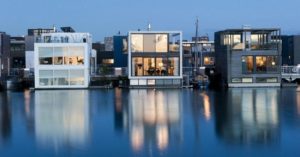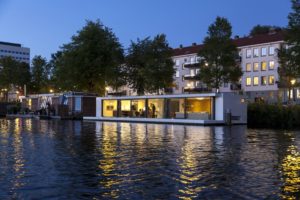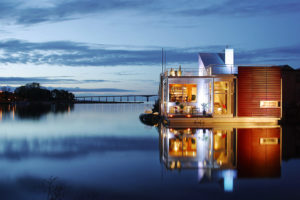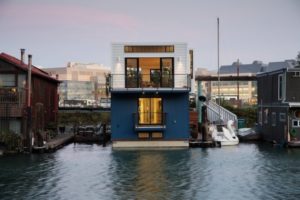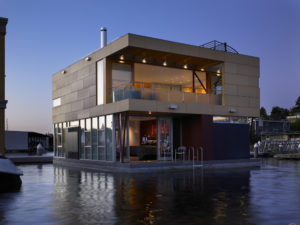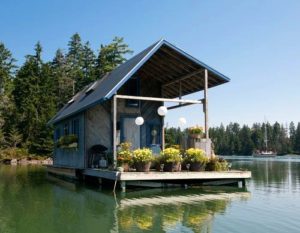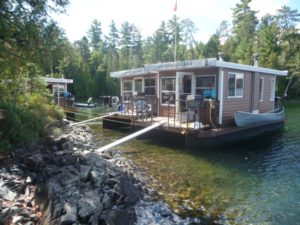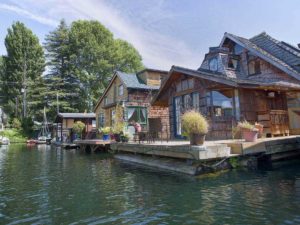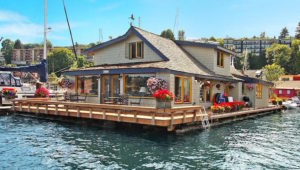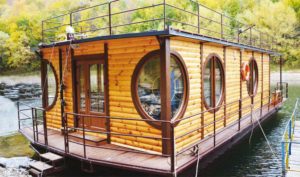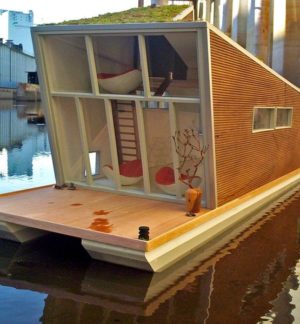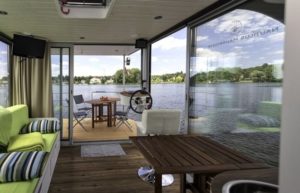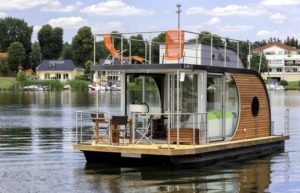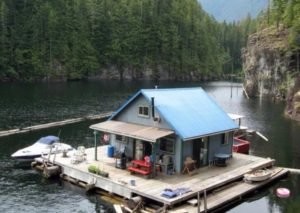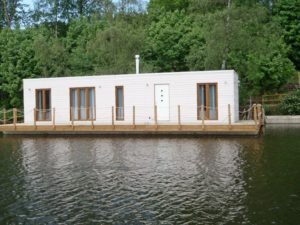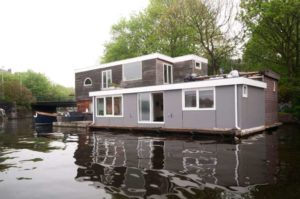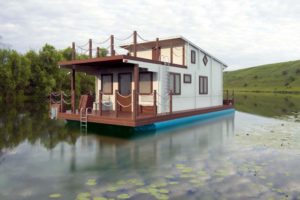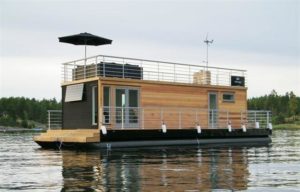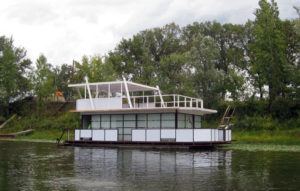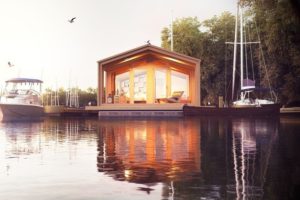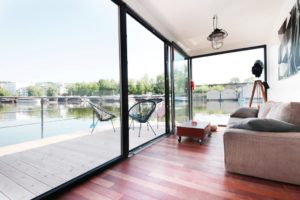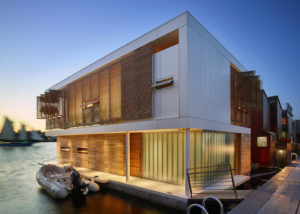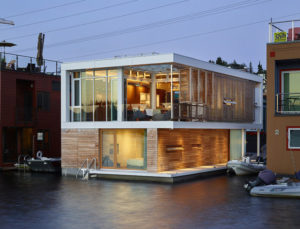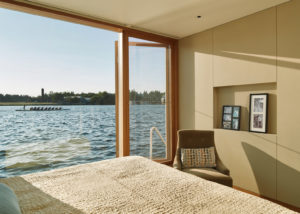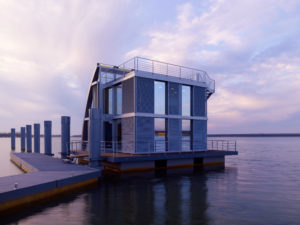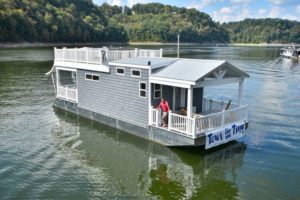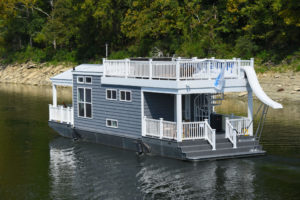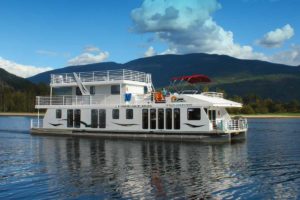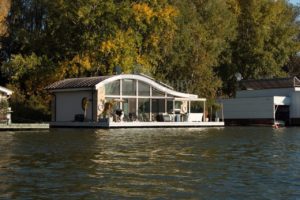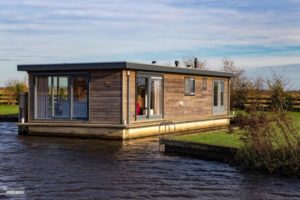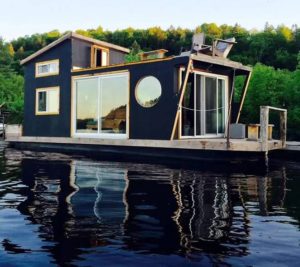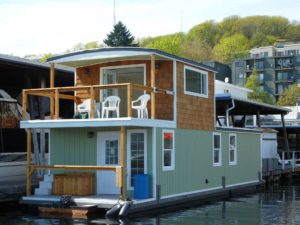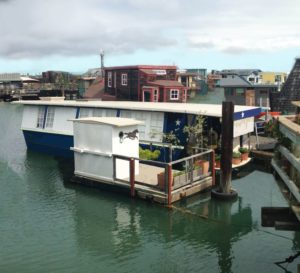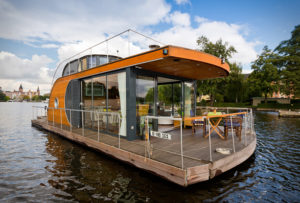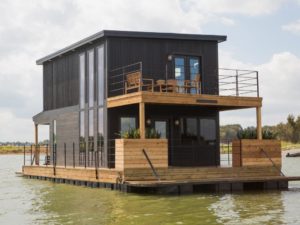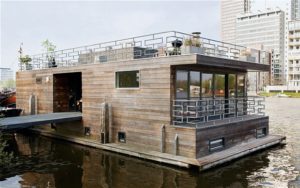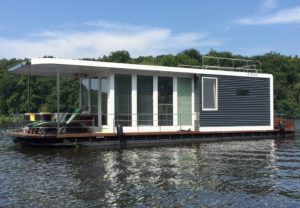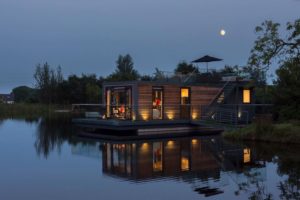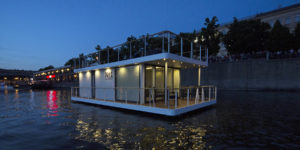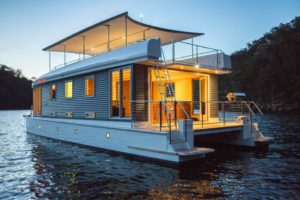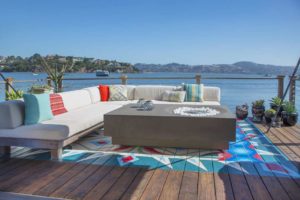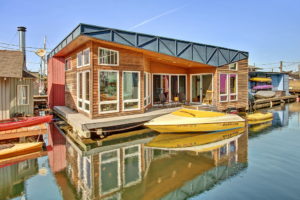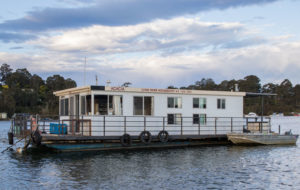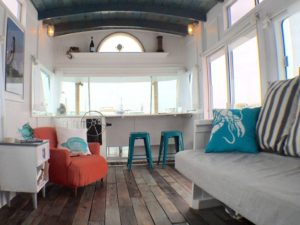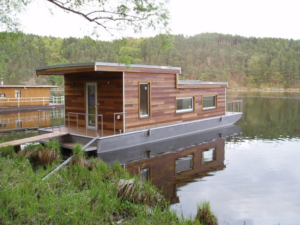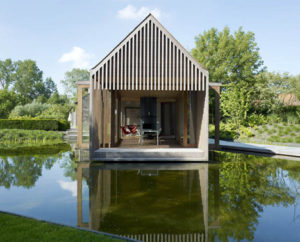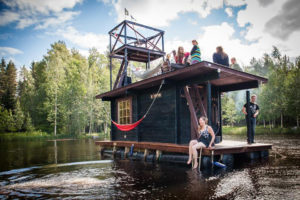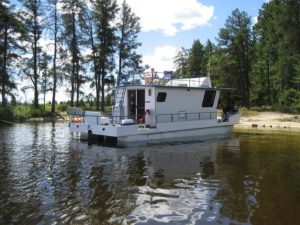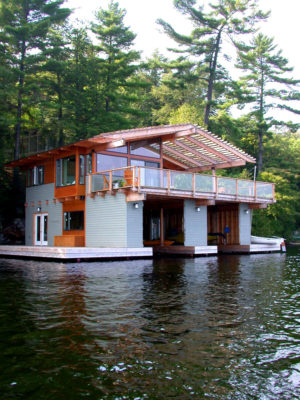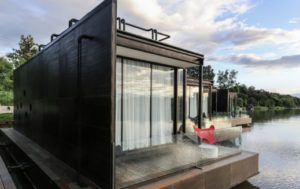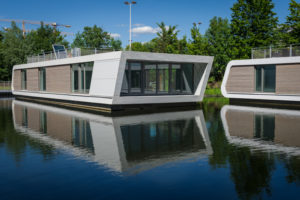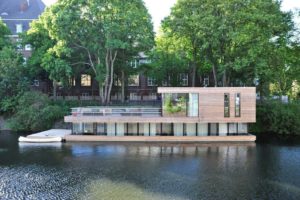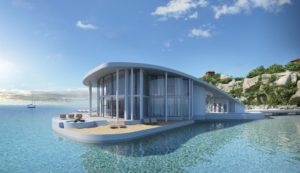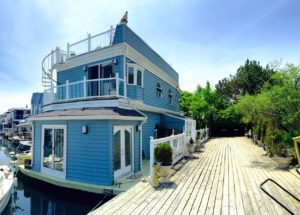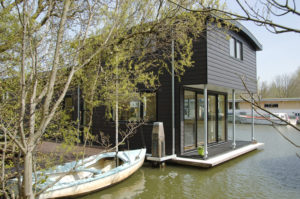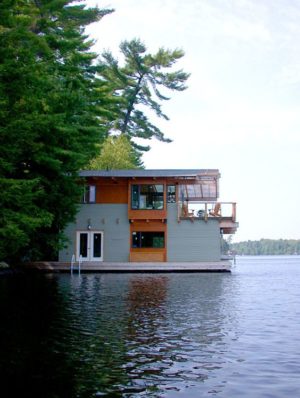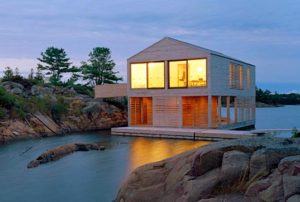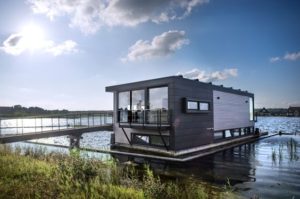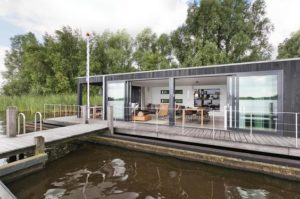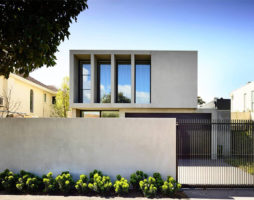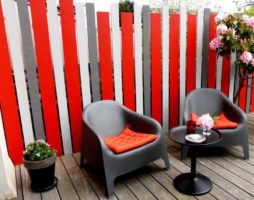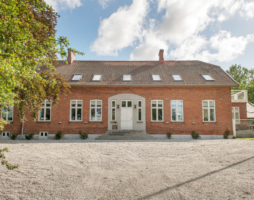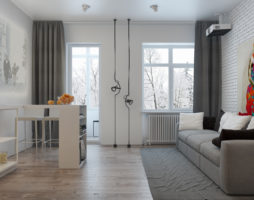Illustrative examples of floating structures in Holland, India, Germany, Canada, and other countries could not go unnoticed by our compatriots. Houses on the water are now becoming popular in Russia. There are many water areas in the country suitable for such construction. A houseboat has a lot of advantages, which cause the growth of interest in such buildings.
- Types of floating residential buildings, their features
- Legal features of floating housing
- Benefits of a house on the water
- The specifics of building a houseboat
- Communications in a houseboat
- Houseboat design options
- Features of design and operation of floating housing
- Photo gallery - houseboat
- Video
Types of floating residential buildings, their features
Shops and restaurants, nightclubs, entertainment centers are being created on the water. It is possible to build a residential building of this type. A floating house can be:
- seasonal or year-round;
- stationary or mobile;
- located in the settlement and outside its borders;
- equipped on a ship base, piles, pontoons.

floating house on a pontoon
For the most part, these structures are used as dachas, designed for operation in the warm season. But modern building technologies and materials make it possible to equip a comfortable home for permanent residence.
Stationary structures do not move across the territory of the water area. They can be connected to the land by rafts, bridges, ladders. Sometimes such buildings are erected far from the coast, they can only be reached by small boats. The mobile home is equipped on a keel-shaped, flat-bottomed base; it can move along the lake, the river on its own or be towed, if necessary, to change the installation location.

Stationary houseboat
Houseboat pontoons are the most popular base. These structures provide the building with a stable position, reliability, and a long service life. Can be used for housing on the water pile foundation
back to index ↑Legal features of floating housing
The legislation for such buildings provides for certain restrictions. Their length should not exceed 20 m, the weight of the building can be up to 80 tons. There is a limit on the number of people living in the house. There should not be more than 12.
Dimensions, weight, location of the building on the water classify it as a small vessel. This legal status provides owners with several significant advantages. They do not need:
- engage in registration, purchase of land;
- obtain permission from the administration to build a house;
- register real estate with the relevant authorities;
- pay property taxes.
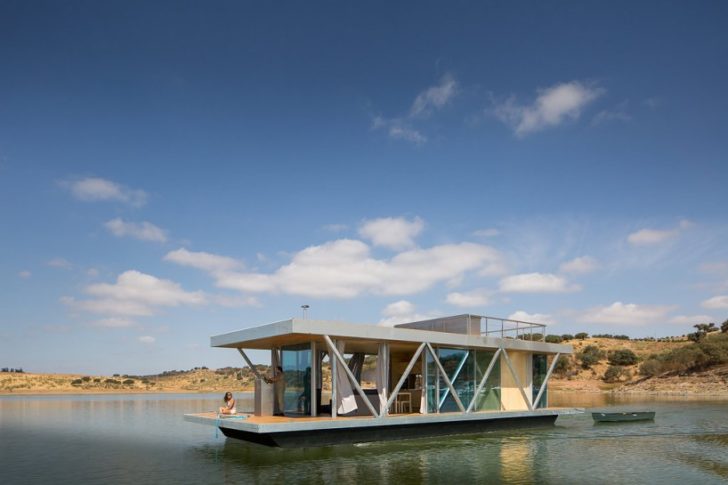
You don't need a building permit to build a house on the water
This property also has its downsides. They are not registered. It is impossible to obtain a mortgage loan for such construction.
The building must be registered. Since this is a small vessel, the procedure is carried out by the relevant state inspection. She issues a ship's ticket to the owner.It gives the right to move around the water area without interfering with navigation. The owner of the house has the right to decorate it with the Russian flag.
back to index ↑Benefits of a house on the water
It is enough to look at the photos of houses on the water to appreciate the advantages of such a location. In the warm season, directly on the territory of the building are organized:
- fishing,
- sunbathing,
- bathing,
- relaxing holidays among beautiful landscapes.
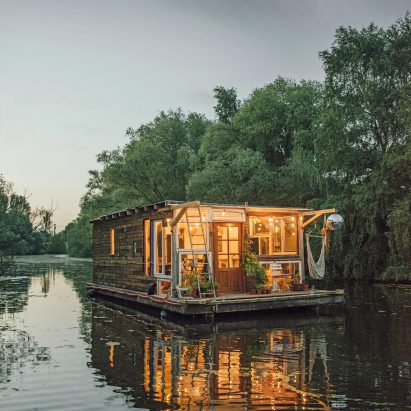
A house on the water will give you a rest among beautiful landscapes
Residents of the house do not remain without entertainment and useful recreation even in winter. The house is located on the territory of a natural skating rink, you can go ice fishing, go skiing. In permanent housing, saunas, baths are often equipped, it is possible to plunge into the hole after the steam room. At any time of the year, the house is a great place for an outdoor picnic.
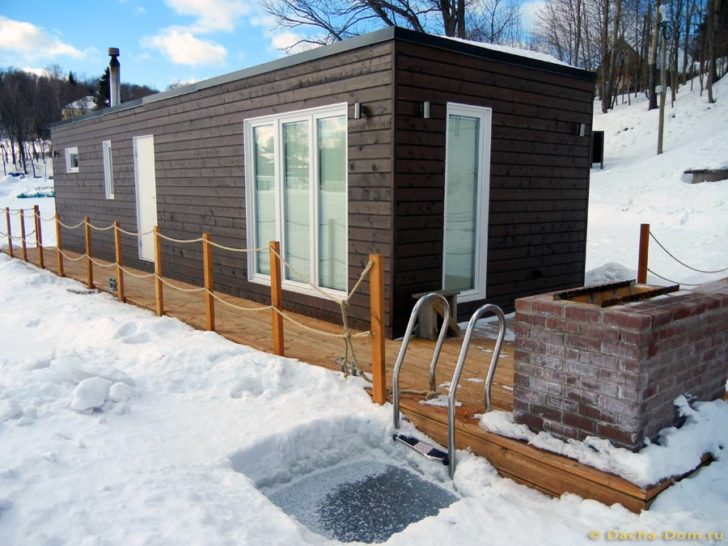
In winter, it is possible to plunge into the hole after the steam room
A mobile structure makes it possible, if desired, to move with the house without experiencing problems with transporting the house and things.
back to index ↑The specifics of building a houseboat
Many who wish to acquire a dacha on the water acquire ready-made factory facilities. This simplifies the construction process. But it must be taken into account that the dimensions of such structures are minimal. Their width is limited by the possibilities of transportation. If you want to build a spacious building for permanent residence, you need to build it on special pontoons for houseboats. This makes it possible to increase the area.
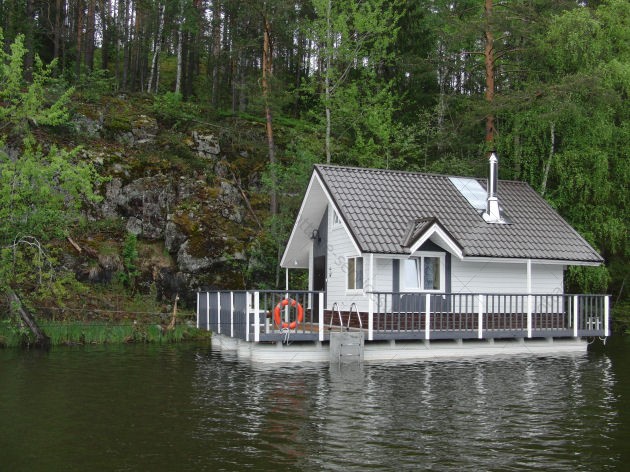
The construction of a pontoon will provide an opportunity to increase the area
Pontoon bases can be made from:
- steel elements;
- reinforced concrete materials;
- fiberglass.
The choice depends on the dimensions of the house, the specifics of construction, operation. Reinforced concrete structures are highly resistant to loads, durable, and are excellent for the construction of stationary structures. Decent technical performance of steel structures. Subject to high-quality assembly, reliable anti-corrosion treatment, they perform their functions for many years.
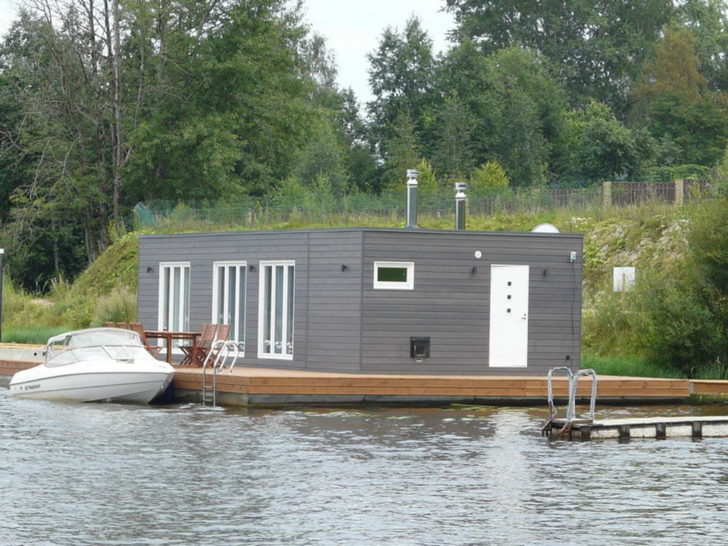
The choice of pontoon depends on the dimensions of the house
Fiberglass pontoons for houseboats have appeared relatively recently. But their popularity is growing rapidly. The material has high strength, does not corrode, and is durable. In addition, such pontoons weigh much less than steel, reinforced concrete counterparts.
An obligatory element of the structure should be a solid metal frame. It will not allow the geometry of the house to change. All elements are treated with moisture-repellent, anti-corrosion agents. The design of the house must be entrusted to qualified specialists. They correctly calculate the center of gravity, take into account wind loads.
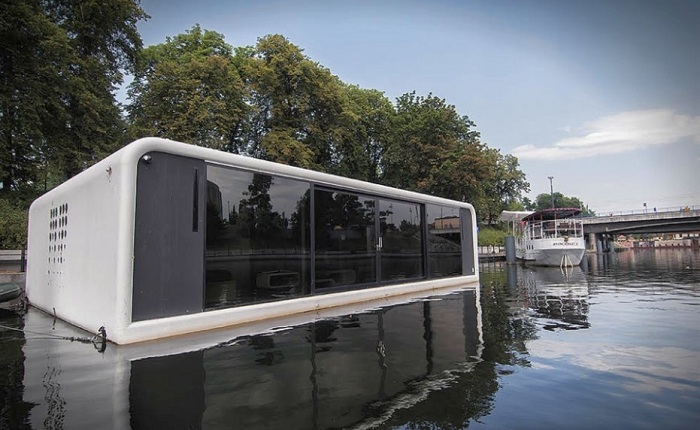
In the construction of the building, materials with a minimum weight are used
In the creation of the building, materials are used that have increased strength to loads and minimal weight. The rooms in the house should be compact. In finishing, preference is given to panel materials that can maintain integrity during rolling. It is undesirable to use plaster or putty, which crumbles when moving around the house.
There is an economical construction option that significantly speeds up the construction process. You can build a house on the water from used sea containers. Containers 20, 40 feet are manufactured taking into account difficult operating conditions. It withstands high humidity, vibration, pitching without loss, and is durable.
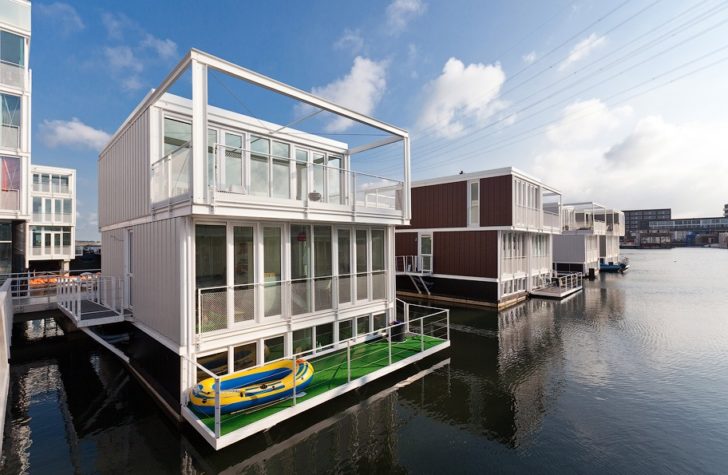
Economical houseboats made from containers
Communications in a houseboat
Regardless of the type of residential building, its location, it is necessary to provide decent living conditions in it.If the floating structure is located within the boundaries of the settlement, located near the shore, it is possible to connect to the centralized sewerage and water supply lines. Comfort in the house can be ensured even in the absence of coastal systems.
There are a lot of equipment for arranging autonomous communications on the modern market. The house may include:
- drinking water tanks;
- fuel containers;
- power generators;
- septic tanks to collect waste water.
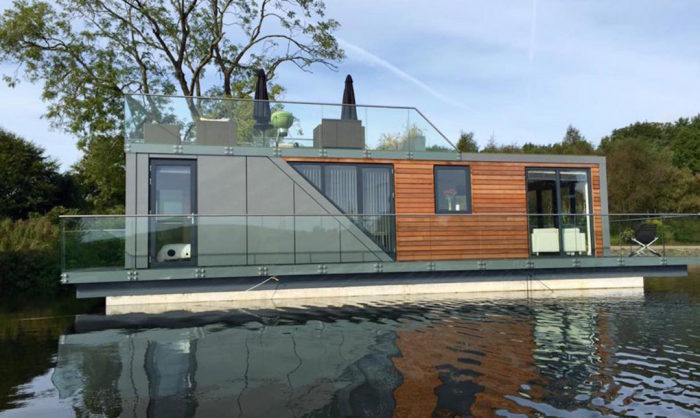
Domestic comfort can be provided even in the absence of urban communications
The installation of such systems will provide proper living conditions. There is no need to create water supplies for domestic needs.
In the house for permanent residence it is necessary to equip heating systems. Steel or cast iron stoves will help maintain a comfortable temperature. You can install a system of gas, electric convectors. It is advisable to equip such buildings with "warm floors" infrared or electric.

The fireplace stove will help maintain a comfortable temperature
Houseboat design options
The rapid growth in the popularity of such structures stimulated the interest of architects and designers in the development of structures of this type. On the network you can find a lot of photos of houses on the water for every taste and budget. The galleries have simple uncomplicated buildings for seasonal living and recreation. You can also see full-fledged original houses in them that can provide comfortable permanent residence for a family.
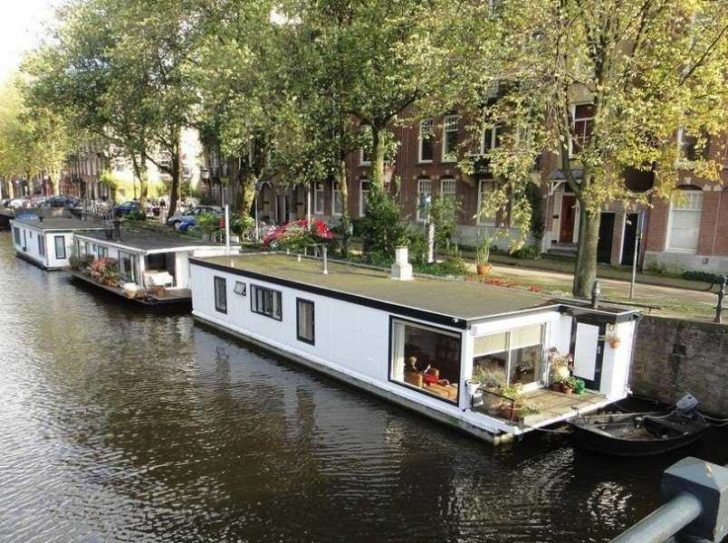
A large houseboat can provide comfortable permanent living
The variety of options allows everyone to make a good choice. Photos of houses on the water can be used as a basis, planning is carried out to your taste, additional architectural elements are equipped. floating buildings:
- can be performed in any style;
- include from two to six full rooms;
- there are one- and two-level;
- equipped with open terraces, roof decks, etc.
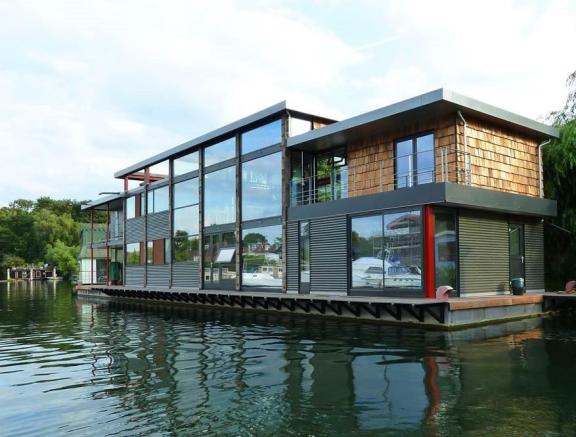
2 storey houseboat
The owner of the future house on the water has the opportunity to reflect all the requirements and wishes in the project.
back to index ↑Features of design and operation of floating housing
Upon completion of the construction of the house, it is required to register it with the state inspection of small boats. A copy of the issued ship's ticket should be made at the notary's office and kept at home. Regular inspections will be required. Transport tax is paid annually.
Most of the owners of a houseboat have to receive unexpected visitors in the face of representatives of the administration. While such structures are rare, not in every region the authorities are well aware of the laws that do not prohibit small boats from mooring in any place where there is no parking ban or interference with navigation. In order to eliminate any misunderstandings and claims, you should contact the administration and conclude an agreement with it on the provision of water for recreational purposes. Such a document is drawn up for 20 years.

The houseboat is required to be registered with the State Inspectorate for Small Vessels
The legislation provides for certain requirements for the safety of the operation of such buildings. The houseboat owner needs:
- to equip it with fire-fighting primary means of general and personal;
- equip a signal lighting system;
- purchase life-saving equipment - rafts, boats, lifebuoys.
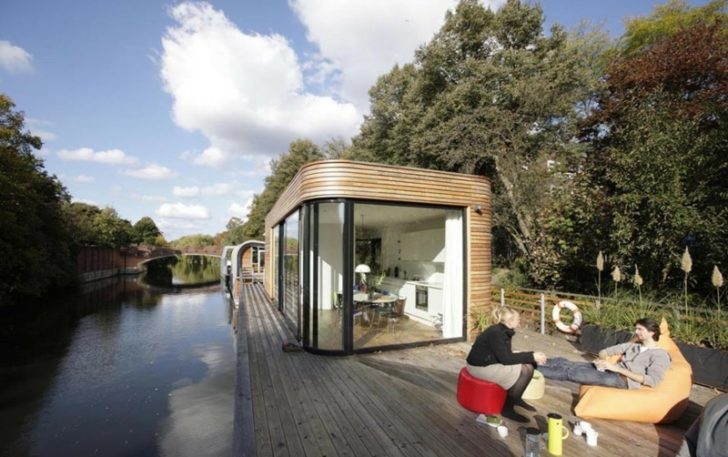
The houseboat must be equipped with life-saving appliances
The building must have qualified technical documentation that complies with the current construction, sanitary and hygienic norms and rules. Persons living in floating housing must comply with environmental protection requirements and not create a risk of water pollution.
back to index ↑Photo gallery - houseboat
Video

